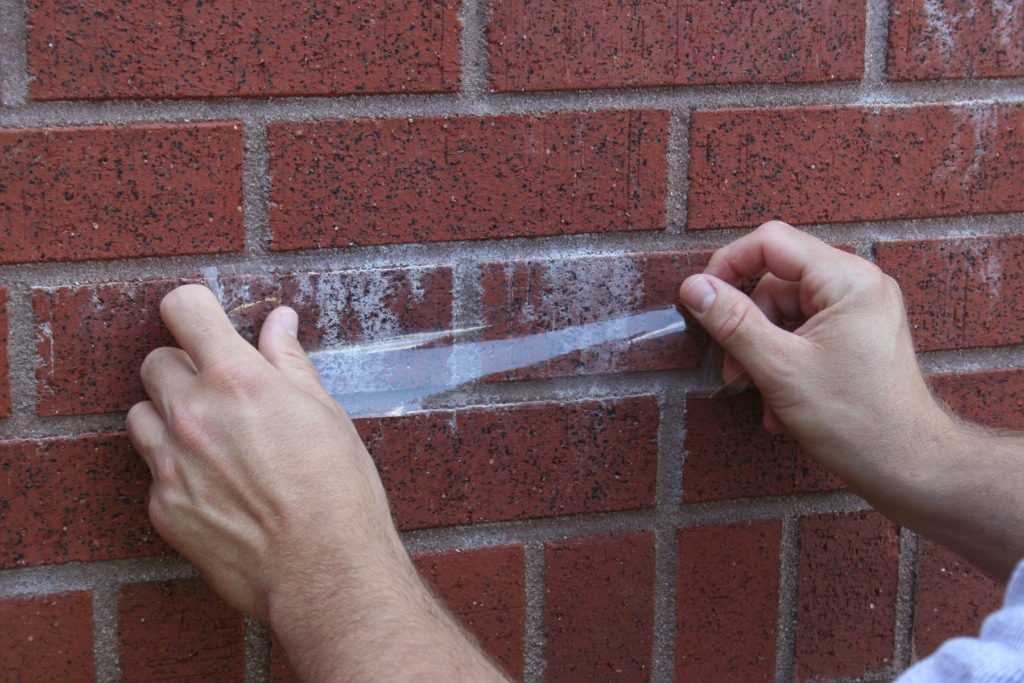Causes of Efflorescence and Efflorescence Test Method Summary
Words: Don Foster
Words: Don Foster and Dr. John Sanders
Photos: Masonry Cosmetics
Efflorescence is a topic we have often explored in MASONRY Magazine over the years, allowing many of us to become quite knowledgeable on the subject. Are you aware, however, that there are tests that can help pinpoint the source of efflorescence in masonry?
Allow me to introduce Dr. John Sanders to you, Director of the National Brick Research Center (NBRC) at Clemson University. John, along with the rest of the NBRC Team, has made important contributions to the betterment of brick manufacturers and our industry in general. One such example is a paper John Sanders and Denis Brosnan published in the Journal of ASTM (Volume 7, No 5, 2010) entitled, "Test Method for Determining the Efflorescence Potential on Masonry Materials Based on Soluble Salt Contact."
Please see John's summary of that test below to learn how its results can help with or spell out the implications of efflorescence findings on one of your projects. First, let’s briefly review how efflorescence is formed and how it can be minimized.
White powdery deposits on the surface of a masonry wall are often efflorescence. Efflorescence occurs when water containing dissolved salts is brought to the surface of masonry, the water evaporates, and the salts are deposited. The following conditions must occur together in order for efflorescence to develop:
- Salts must be present within or in contact with the brickwork.
- A source of water must be in contact with the salts for a period of time sufficient to dissolve them.
- A pore structure must be present in the masonry that allows the salt solution to travel to the surface where evaporation of water can occur.
Of these three conditions, it is easiest to control the water's path to the salts. This is generally done through proper detailing and protection during construction:
- Proper detailing includes the installation of through-wall flashing but also the transitions between the masonry wall and other systems such as windows, roofing, or paving. Repeated efflorescence is typically a sign that excess water is being directed into the wall in some way.
- Protection during construction includes covering the masonry materials before they are installed and covering the tops of unfinished walls at the end of each workday, prior to shutdown periods, and before rain or snow events with water-resistant membranes or tarps that extend at least 24 inches down both sides of the wall and are secured.
Occasionally, even when a mason contractor follows the above recommendations, an efflorescence condition referred to as “new building bloom” may occur shortly after masonry construction is completed. In such cases, it is usually recommended to wait a year before treating or testing for efflorescence in order to allow the moisture inherent in the construction of masonry to disappear on its own. However, if efflorescence persists after a year, it should be addressed.
For more information, please refer to BIA Technical Note 23A (Efflorescence – Causes and Prevention) and ASTM C1400 (Standard Guide for Reduction of Efflorescence Potential in New Masonry Walls).
People generally assume that efflorescence is caused by the brick. However, that is not usually true. Salts that contribute to efflorescence most commonly come from the materials in contact with the brick, such as mortar, grout, concrete masonry, concrete, cast stone, or soil rather than the brick itself.
Fortunately, the efflorescence deposits can be used to identify what material(s) likely caused them. A test method, based on ion chromatography, has been developed to identify the composition and amount of soluble material in an efflorescence deposit as well as determine the efflorescence potential of all of the components of the masonry system (brick, block, mortar, etc.). In the majority of cases, we can match the salts in the efflorescence deposit to one or more components using this test method.
For this test method, small samples (about the size of a quarter) of the effloresced surface are enough for an analysis. If it is not possible to chip a sample from the surface, a tape lift sample of the efflorescence deposits as shown in the image will suffice in many cases. To determine the source of the efflorescence, we also request samples of uninstalled masonry (brick, block), mortar, and any other cementitious materials in contact with the masonry.

You can request this test through the NBRC. It usually will take a few days to run the tests but could be longer depending on the backlog of tests they are working on at the time. Members and also non-members can request this test. The NBRC is sponsored by the Brick Industry so getting the brick manufacturer involved helps avoid a conflict of interest. Contractors can go to brickandtile.org for contact information and there is also a sample submission form to fill out there as well.